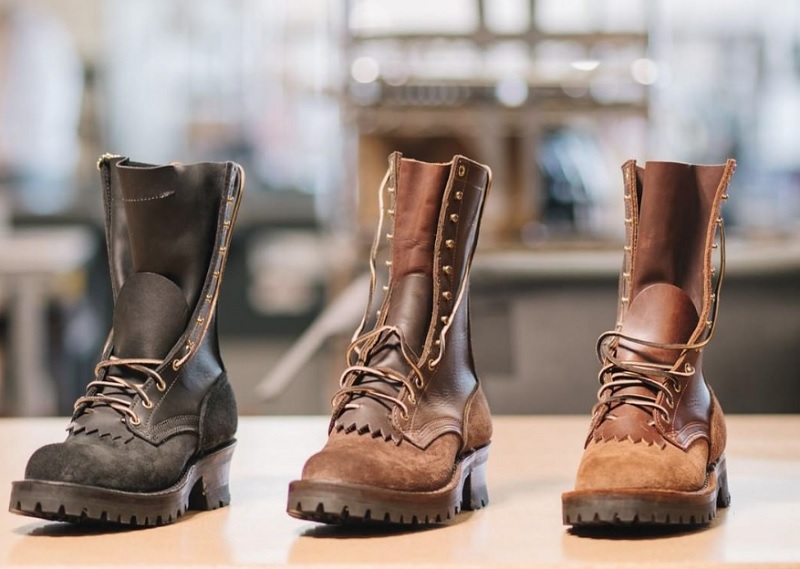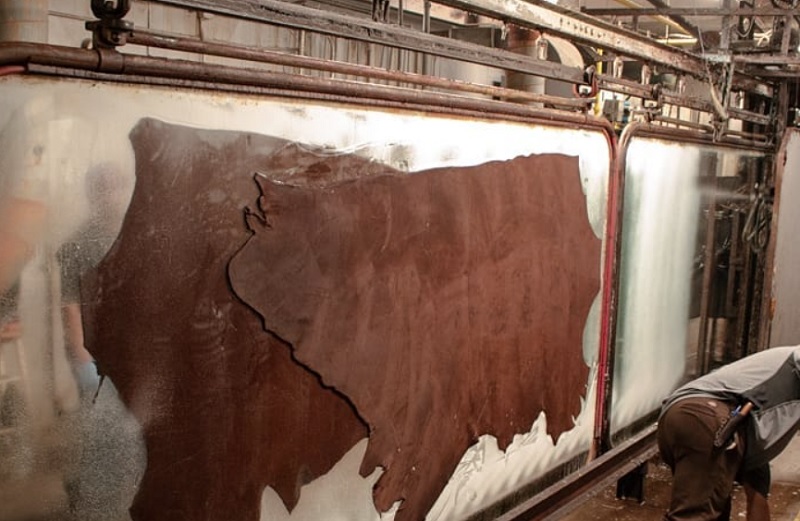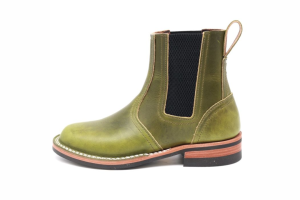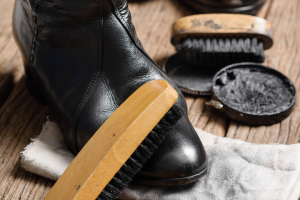What Is Vegetable Tanned Leather?

What is vegetable tanned leather? Does that make it good?
Does it matter if my leather boots are made with vegetable tanned leather?
A vegetable-tanned leather is often mentioned as a selling point for various leather goods, including work belts, boots, wallets, jackets and so on. In and of itself, it's one of the ways in which leather is tanned, meaning a preservation process that turns the skin of an animal - which starts decaying the minute the animal dies - into a durable fabric that can be used to make things.
It isn't so much that it's "better" or "worse" than any other leather tanning method, but it's more that it's the best tanning method for certain applications, and high quality footwear is certainly one of them. But what IS vegetable tanned leather? Let's find out…
Vegetable Tanned Leather Uses Natural Plant Extracts To Make Leather
What "vegetable-tanned leather" means is a leather that has been tanned using a natural plant extract. Specifically, the active ingredient is tannins, a class of astringent (acidic) compounds found in various plants.
The word "tannin" comes from the Latin word "tannare," which essentially means oak bark. Oak, and the bark of other trees such as maple, beech as well as an enormous family of plants.
How leather was made centuries ago was to essentially toss in a hot vat of water and oak bark. "Tanning" became the verb for the activity in English, and the people who performed the work became known as "tanners," which is also the etymology of the name Tanner. Anyone with the last name of Tanner, therefore, descends from someone who made leather somewhere back in the mists of time.
What Is Tanning?

"Tanning" is a chemical process that alters the collagen proteins in the hide of an animal. The effect is that the skin becomes slightly more rigid, but also enters a more stable molecular state which prevents any decay from happening.
After all, skin is made of meat. Once the body dies, decay begins. What tanning does is stop putrefaction in its tracks.
The basic chemical process, without going too deeply into it, is that the collagen in the skin binds with the tannins in the tanning liquid, coating the collagen molecules and essentially sealing them. The collagen proteins become far less water-soluble and are also much less susceptible to bacterial damage.
There are a few different chemical methods by which tanning can be done, of which vegetable tanning is one. The difference, of course, is what kind of product that the tanning process produces in the end, which is the important part.
Why Vegetable Tanned Leather?
Vegetable tanned leather tends to be harder and a little more rigid than leather produced by other methods, the most prevalent being chromium tanned leather. Wickett and Craig Leather produce some of the finest vegetable tanned leather in the US, and their leather is tanned right here in America.
Chromium tanning uses chromium (and other compounds) to achieve the same preservative effect, but tends to yield a softer and less durable product. That isn't a bad thing; chromium tanned leather is good for clothing or any other leather good that doesn't require the utmost of rigidity. The faster tanning time (usually a day) is also conducive to faster turnaround at scale.
However, it's also hilariously bad for the environment since chromium is a heavy metal. Not like Iron Maiden; we mean like uranium.
Vegetable tanned leather, however, tends to be harder and have a darker color compared to chromium tanned leather. That's why vegetable-tanned leather is better for working applications such as upholstery, luggage, saddles and other pieces of horse tack, and leather goods including belts, wallets, gun holsters and leather boots.
However, bear in mind that just because leather is vegetable-tanned necessarily means it's of higher quality. There are various kinds of leather grain available, in multiple levels of quality. High quality leather, meaning top- and full-grain leather from an established tannery such as Wickett and Craig among others, produces high quality leather once tanning is completed. A talented cook can make a tasty dish with less-than prime ingredients, but higher quality ingredients lead to better cuisine overall.
Vegetable Tanned Leather Is The Best Choice For Leather Boots

Vegetable-tanned leather as a general rule produces a hardier product for working applications, but that doesn't mean it doesn't also produce a fine product. The finest of leather goods are made with vegetable-tanned leather, after all, from high-end luggage and furniture to handmade boots and shoes for work or fashion.
Since footwear has to be durable, vegetable tanned leather is obviously the best choice for work boots and fashion boots. The hardier nature makes it able to endure the abuse without tearing, which is why leather goods can last decades when properly cared for.




